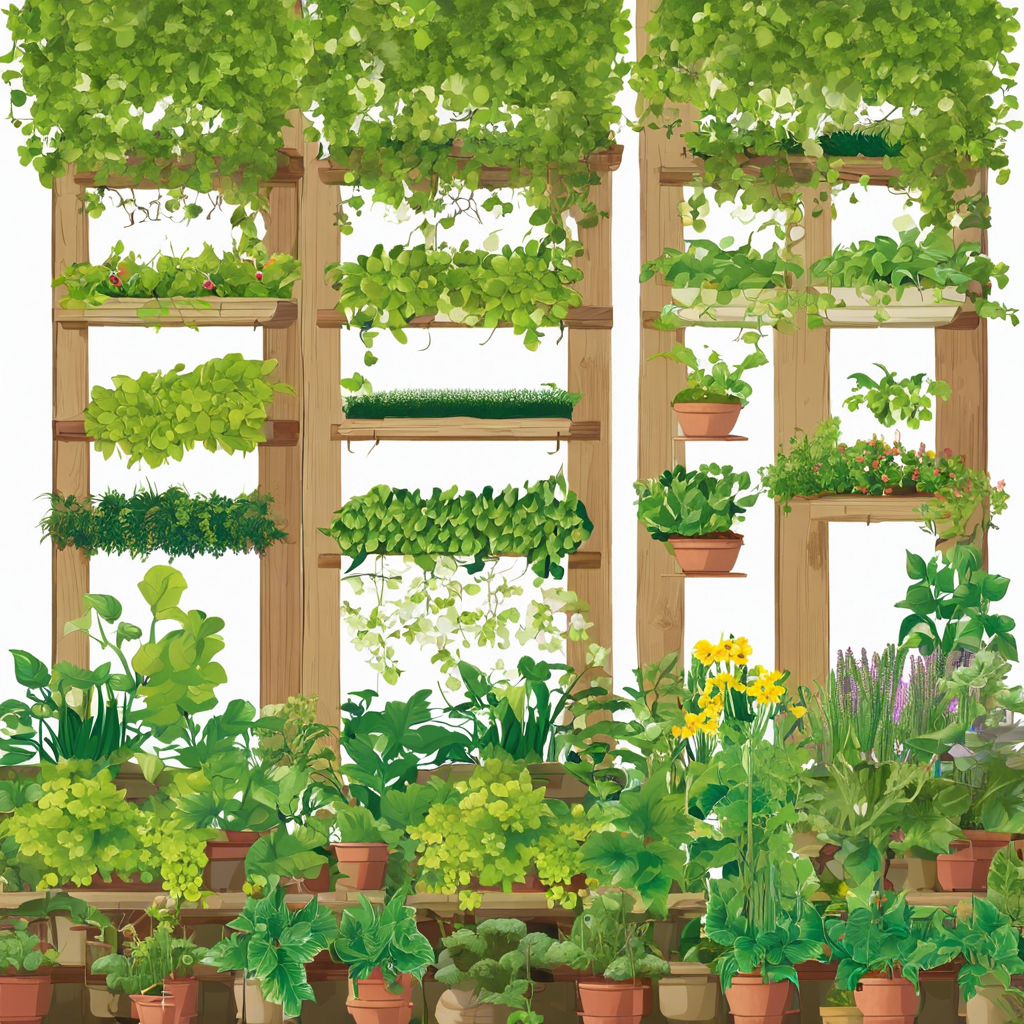Gardening is an enjoyable hobby for many, but it can also be a great way to maximize your yield and grow a variety of plants in a limited space. Vertical gardening is the practice of growing plants upwards instead of outwards, and it offers several benefits for those looking to make the most of their gardening space. Whether you have a small backyard or want to transform your balcony into a lush oasis, vertical gardening can help you achieve your goals.
One of the key advantages of vertical gardening is its space-efficiency. By training plants to grow upward, you can utilize your garden’s vertical space and create a lush and productive garden without taking up valuable floor space. This method is particularly beneficial for those with limited outdoor areas or those looking to create a privacy screen or living wall. With a vertical garden, you can grow a variety of plants, including vegetables, herbs, and flowering vines, creating a vibrant and multifunctional space.
To start your own vertical garden, choose a structure that suits your space and preferences. Trellises, arbors, and obelisks can provide support for climbing plants, while hanging baskets and wall-mounted containers can hold an array of colorful flowers or tasty herbs. If you’re feeling creative, reuse household items such as ladders, palettes, or even an old bookshelf to add a unique touch to your garden. The options are endless, so you can let your creativity flow and design a vertical garden that reflects your personal style.
When selecting plants for your vertical garden, consider their growth habits and choose those that thrive when climbing or trailing. Vining plants, such as beans, peas, and cucumbers, will happily climb upwards with the support of a trellis, saving space while providing you with a bountiful harvest. Hanging plants like trailing succulents or flowering varieties such as petunias and fuchsias will add a splash of color to your vertical display. Herbs such as rosemary, thyme, and mint also grow well in vertical gardens, providing easy access for cooking and a fragrant atmosphere.
Sunlight availability is another crucial factor in the success of your vertical garden. Ensure that your plants receive the right amount of sunlight by positioning your garden accordingly. Full sun plants should be placed in areas that receive direct sunlight for most of the day, while partial sun varieties may prefer a spot with morning sun and afternoon shade. Take note of the sun’s path throughout the day and plan your garden to maximize sunlight exposure for your plants.
Soil moisture is another important consideration. Vertical gardens can dry out more quickly than traditional gardens, especially those in hanging containers or wall-mounted planters. Group plants with similar water needs together and ensure your irrigation system adequately covers the entire structure. Consider installing a drip irrigation system or soaker hoses to deliver water directly to the plant’s roots, ensuring they receive adequate moisture without excess runoff.
When caring for your vertical garden, regular maintenance is key. Remember to monitor your plants’ growth and guide them in the right direction. Train vines to climb their supports and gently tie them in place if needed. Prune and trim your plants to encourage fullness and remove any dead or diseased foliage. Also, keep an eye out for pests and treat them appropriately to prevent infestations. With the proper care, your vertical garden will thrive and provide you with a beautiful and productive space.
One of the best things about vertical gardening is the easy harvest it affords. With your plants growing at eye level or above, there’s no need to bend or kneel to access your produce. This also makes it easier to spot ripe fruits or vegetables, ensuring you can pick them at their prime. Vertical gardens can also help deter pests, as they make it harder for critters like rabbits or snails to reach your precious plants. Enjoy the convenience and bountiful yields that your vertical garden provides.
Finally, vertical gardening offers the added benefit of enhancing the aesthetic appeal of your outdoor space. With plants growing vertically, you can create beautiful living walls or vibrant privacy screens. It adds depth and interest to your garden, allowing you to play with different plant combinations and create stunning visual displays. Whether you opt for a symmetrical design or a more natural, free-flowing look, vertical gardening is a unique way to express your creativity and impress your family and friends. So why wait? Start planning your vertical garden today and take your gardening game to new heights.

